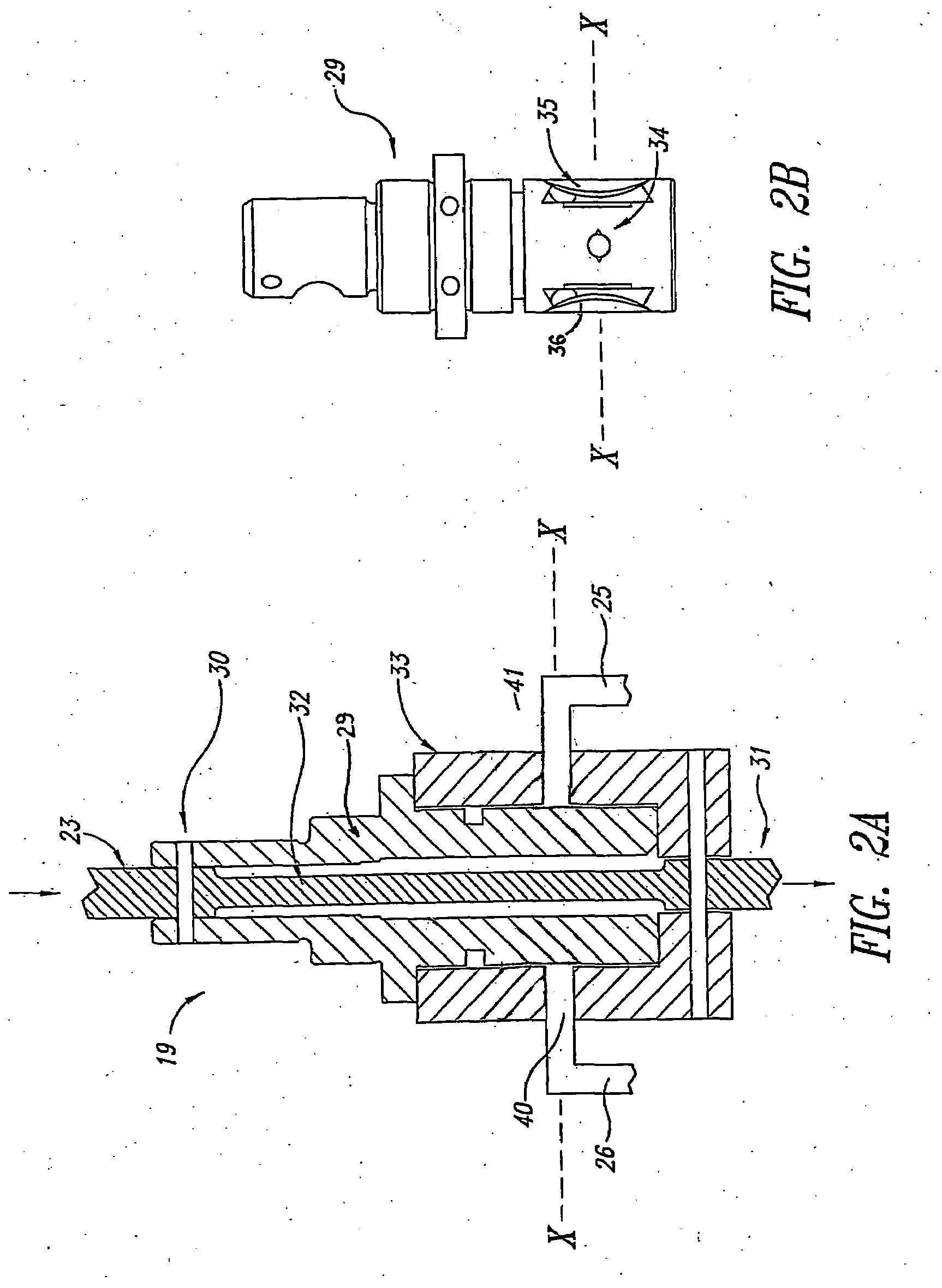Engine-off power steering system
- Summary
- Abstract
- Description
- Claims
- Application Information
AI Technical Summary
Benefits of technology
Problems solved by technology
Method used
Image
Examples
Embodiment Construction
[0025]Referring to FIG. 1, a schematic view of a power steering system for a motor vehicle 10 is set forth. Motor vehicle 10 may be either a conventional or hybrid vehicle. For purposes of this application, the terms “conventional” motor vehicle and “non-hybrid” motor vehicle will be used interchangeably, referring to the great majority of passenger vehicles that have a single drivetrain solely and directly powered by an internal combustion engine, with no on-board propulsive power being provided to the drive wheels through a secondary or “hybrid” power source (such as an electric or hydraulic motor).
[0026]Referring to FIG. 1, internal combustion engine 11 mechanically drives hydraulic pump 12. Hydraulic pump 12 is shown in FIG. 1 being mechanically driven by the engine through an accessory drive belt 13, but could also be mechanically driven through integration on the engine output shaft 14, or by other means, as is understood in the art. Optional clutch device 13b provides the opt...
PUM
 Login to View More
Login to View More Abstract
Description
Claims
Application Information
 Login to View More
Login to View More - Generate Ideas
- Intellectual Property
- Life Sciences
- Materials
- Tech Scout
- Unparalleled Data Quality
- Higher Quality Content
- 60% Fewer Hallucinations
Browse by: Latest US Patents, China's latest patents, Technical Efficacy Thesaurus, Application Domain, Technology Topic, Popular Technical Reports.
© 2025 PatSnap. All rights reserved.Legal|Privacy policy|Modern Slavery Act Transparency Statement|Sitemap|About US| Contact US: help@patsnap.com



